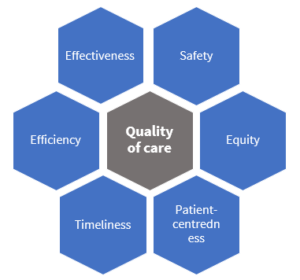Patient Safety and quality of care
“Medicine used to be simple, ineffective, and relatively safe. It is now complex, effective, and potentially dangerous.”
Sir Cyril Chantler (BMJ, 1998)
The complexity of healthcare is increasing day after day: increased scientific knowledge of the diseases; new technologies, treatments, and practices; high diversity of patients, many of them with multimorbidity and complex needs; large variety of healthcare providers. Intricate healthcare systems provide high volume of care. Therefore, healthcare organizations are continuously challenged to improve the results while pursuing the fundamental principle of ensuring safety: first, do not harm, a maxim attributed to Hippocrates.
A recent definition of Patient Safety, adopted by the WHO Global Safety Action Plan, recognizes the complexity of the discipline and the need of concentrated efforts:
Patient Safety is a “framework of organized activities that creates cultures, processes, procedures, behaviours, technologies and environments in health care that consistently and sustainably lower risks, reduce the occurrence of avoidable harm, make errors less likely and reduce impact of harm when it does occur”.1
According to the Institute of Medicine 2, safety is an attribute of quality of care, along other dimensions:

Dimensions of quality of care. Adapted from: Institute of Medicine (US) Committee on Quality of Health Care in America. Crossing the Quality Chasm. Washington, D.C.: National Academies Press (US); 2001.
Quality of care – the degree to which health care services for individuals and populations increase the likelihood of desired health outcomes and are consistent with current professional knowledge.” 2
- World Health Organization. Patient Safety Incident Reporting and Learning Systems: technical report and guidance. Geneva: World Health Organization; 2020.
- Institute of Medicine (US) Committee on Quality of Health Care in America. Crossing the Quality Chasm. Washington, D.C.: National Academies Press (US); 2001.
0 Comments